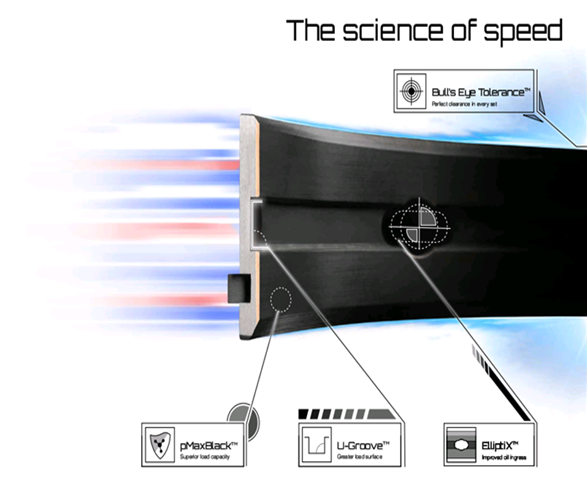Main page
About us
Sliding Bearings Consulting
Advertising Opportunities

SubsTech’s sister website Smooth Sliding provides independent engineering consulting services that help you to solve engine bearing related issues: failures, material selection, geometry design and optimization of hydrodynamic conditions.
Smooth Sliding is an engineering consulting company run by Dr. Dmitri Kopeliovich:
- VP R&D of King Engine Bearings.
- World leading expert (32 years of experience) in design, technology and materials for Engine bearings in applications such as automotive, renewable energy, aviation, racing and others.
- Founder and owner of SubsTech (Substances & Technologies) – a leading professional website on Materials Science and Engineering.
- Author of numerous scientific and engineering publications and patents.
- Founder and owner of Smooth Sliding.
For further information and for requesting consulting services please visit our sister website Smooth Sliding.
to Metals
to Engine bearings
Consistency in Bearing Wall Thickness
Introduction
Hydrodynamic lubrication is the major regime of engine bearing operation. In hydrodynamic lubrication, the bearing surface is separated from the crankshaft by an oil film [1]. The presence of the oil film prevents direct metal-to-metal contact. This considerably reduces any wear of the engine bearing material. The oil film also decreases the probability of seizure between the bearing and journal materials. Thus bearing life span strongly depends on the stability of hydrodynamic lubrication.
Three conditions are indispensable to the regime of hydrodynamic lubrication:
- Adequate volume of liquid lubricant supplied to the bearing
- Journal rotation speed sufficient for generating separating pressure
- A converging gap (wedge) between the bearing and journal surfaces
The latter condition is realized when the journal is shifted from the concentric position in the bearing. The maximum value of shift is determined by the oil clearance – the difference between the bearing and the journal diameters. Clearance is the basic geometric parameter of an engine bearing [2].
Oil clearance is determined by the formula:
C = Dh - Dj – 2*h
Where:
Dh – bearing housing diameter;
Dj – journal diameter;
h – bearing wall thickness, measured at the crown.
A bearing manufacturer can not control the housing and journal diameters. Therefore bearing thickness is the only parameter available to bearing manufacturers that can affect the clearance value.
In order to provide a stable hydrodynamic lubrication regime for bearing operation, its thickness should match the specified value within a tight tolerance. In other words, bearings should be manufactured with consistent thickness.
to top
Bull’s Eye Tolerance
Bull’s Eye Tolerance is a production technology developed by King Engine Bearings. It ensures very accurate wall thicknesses. The technology includes fully automatic processes of precise boring and thickness measurement. It is achieved in machines developed and designed by King engineers. The process is integrated into the quality assurance system of the factory, monitoring the production process and the machines’ performance.
In order to evaluate its accuracy level as compared to that of other bearing manufacturers, King ordered an independent investigation by SGS S.A. – a multinational company headquartered in Geneva, Switzerland. SGS S.A. provides inspection, verification, testing and certification services. Identical bearings produced by 6 different leading bearing manufacturers were measured in the investigation. 32 bearings (4 sets with 8 pieces each) of each manufacturer were taken. The wall thickness of each bearing was measured in two points of the bearing crown (384 measurements total).
Analysis of the minimum and maximum thickness, statistical variances and the average values is presented in the table.
Summary of measurement results
| Manufacturer | Maximum thickness, inch | Minimum thickness, inch | Variance (max-min), µinch | Average thickness, inch |
|---|---|---|---|---|
| Competitor 1 | 0.071047 | 0.070728 | 319 | 0.070877 |
| King Bearings | 0.071071 | 0.070898 | 173 | 0.071004 |
| Competitor 2 | 0.071386 | 0.070272 | 1114 | 0.071199 |
| Competitor 3 | 0.070996 | 0.070780 | 217 | 0.070860 |
| Competitor 4 | 0.071024 | 0.070579 | 445 | 0.070842 |
| Competitor 5 | 0.071197 | 0.070854 | 343 | 0.071009 |
The statistical variances of the measurement results are also shown graphically in Fig.1.
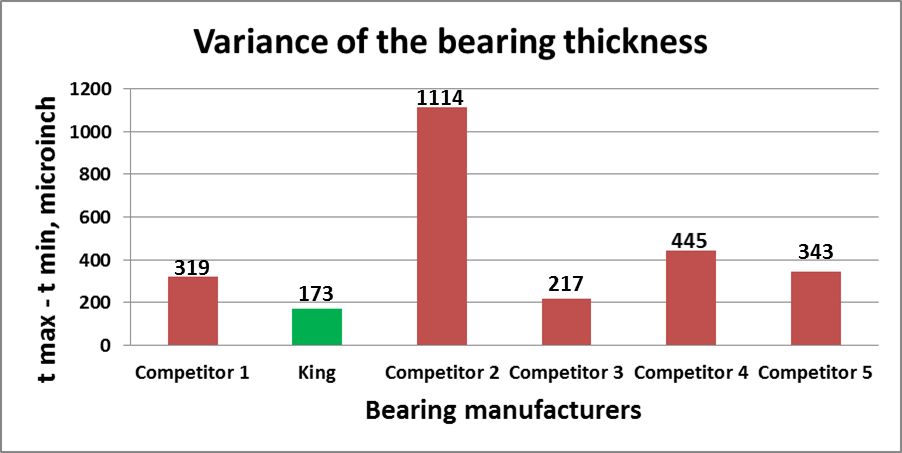
Fig.1 Statistical variances of bearing wall thickness
King bearings exhibited the minimum statistical variance of 173 microinch. The variances of the bearing thickness of other manufacturers were between 217 to 1114 microinch. The measurement results were statistically analyzed. The values of the standard deviations of bearing thickness of each manufacturer are presented in Fig.2.
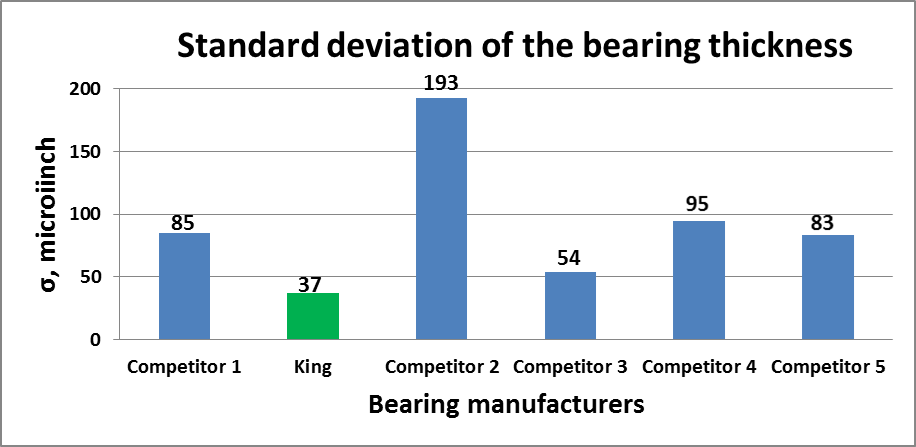
Fig.2 Standard deviations of bearing wall thickness measurements
Standard deviation is a parameter characterizing consistency of the measurement results. Therefore, the consistency of King bearings’ thickness is the best of all bearings tested in the investigation. The standard deviation of King bearing thickness is 37 microinch, whereas that of other manufacturers varies between 54 to 193 microinch. The values of standard deviations were used for building curves of Gaussian (normal) distribution of bearing thickness (Fig.3).
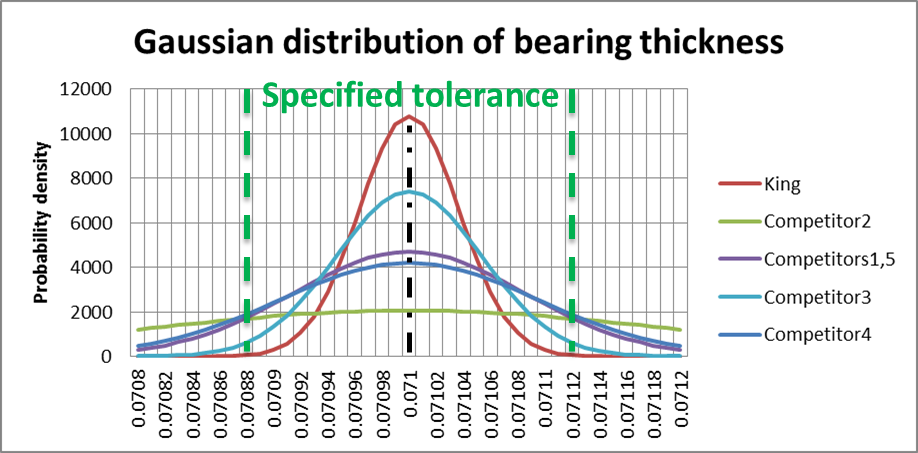
Fig.3 Gaussian distribution of wall thickness of bearings made by different manufacturers
The graph clearly demonstrates the advantage of King bearings wall thickness achieved by King Bull’s Eye Tolerance technology over the competition.
to top
Effect of Consistency of Bearing Thickness on the Stability of Hydrodynamic Lubrication
Bearing thickness directly influences the value of oil clearance. Oil clearance determines the hydrodynamic parameters of lubrication, including oil temperature rise, oil pressure distribution, oil flow, minimum oil film thickness, energy loss and coefficient of hydrodynamic friction. If the values of bearing thickness are scattered within a wide range, the hydrodynamic parameters will vary accordingly. Consistency of wall thickness produces more consistent hydrodynamic characteristics and a more stable regime of hydrodynamic lubrication [3].
The parameters of hydrodynamic lubrication of bearings [4] with various values of oil clearance were theoretically calculated using software developed by King Engine Bearings. This software is capable of calculating loads, minimum oil film thickness, oil temperature rise, energy loss, oil flow rate and other thermodynamic, dynamic and hydrodynamic parameters for each bearing of an engine, at any angular position of the crankshaft. The effect of the consistency of bearing thickness on the oil flow rate is demonstrated by the graphs in Fig.4. Greater oil clearance results in a greater flow leaking out from the bearing. Fig 4 shows that the great variance of bearing thickness of Competitor2 results in a doubling of the oil flow rate. The oil flow actually is the amount of oil leaking out from the bearing in a time unit. If the capacity of the oil pump is not sufficient to compensate for the leaking lubricant, the bearing will operate under conditions of oil starvation. This occurs when the continuous hydrodynamic film is broken and the bearing and journal surfaces directly contact each other. Oil starvation causes rapid wear of the bearing material followed by seizure. 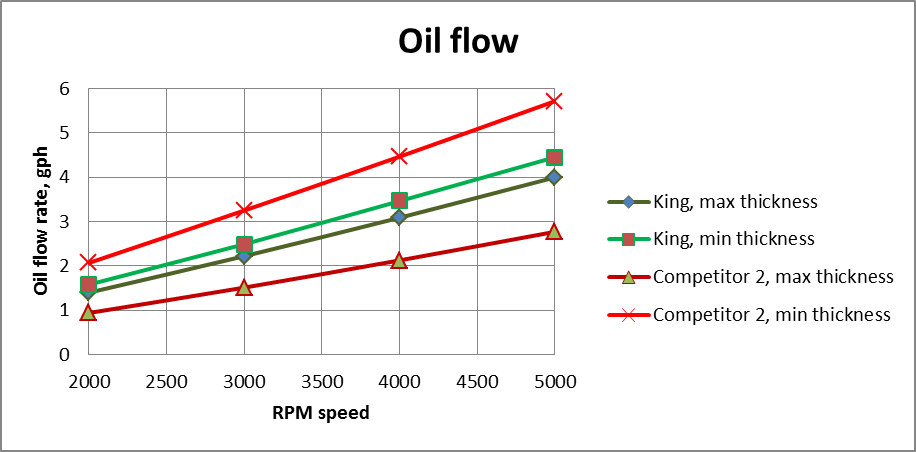
Fig.4 Effect of bearing thickness consistency on oil flow rate
The much more consistent thickness of King bearings results in a minor difference in oil flow rates, thereby producing more stable hydrodynamic lubrication.
Due to the hydrodynamic friction of oil flowing through the clearance, the bearing heats up. The temperature rise is determined by the amount of power dissipated in the bearing and by the flow rate of oil. Too thick a bearing can decrease clearance, reduce oil flow and increase the temperature rise. The effect of bearing thickness on oil temperature is presented in Fig.5.
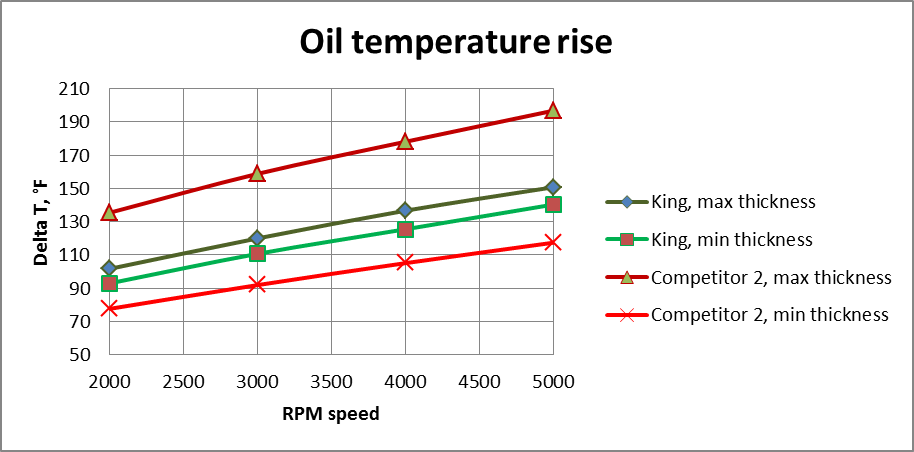
Fig.5 Effect of bearing thickness consistency on oil temperature rise
Oil that is too hot may reach the temperature of its decomposition. Then it loses its properties, including lubricity. The hydrodynamic lubrication breaks down and the journal starts rubbing the bearing surface. This leads to rapid wear of the bearing material and its seizure with the journal. As seen in Fig.5, the low variance of King bearing thickness prevents the oil from overheating and maintains hydrodynamic lubrication.
Bearing load is transmitted from the journal to the bearing via the oil film which separates their surfaces. Load generates pressure through the oil film. It is not distributed uniformly over the bearing surface. It has a peak, reaching the maximum value in a region close to the position where the oil film reaches minimum thickness. The value of the peak pressure is important with regard to the load capacity of the bearing material. A high level of peak pressure may cause early failure of the bearing due to fatigue fractures in its material [5]. Distribution of oil pressure may be calculated theoretically. Fig.6 presents pressure distribution in King bearings in the form of a 3-D diagram.
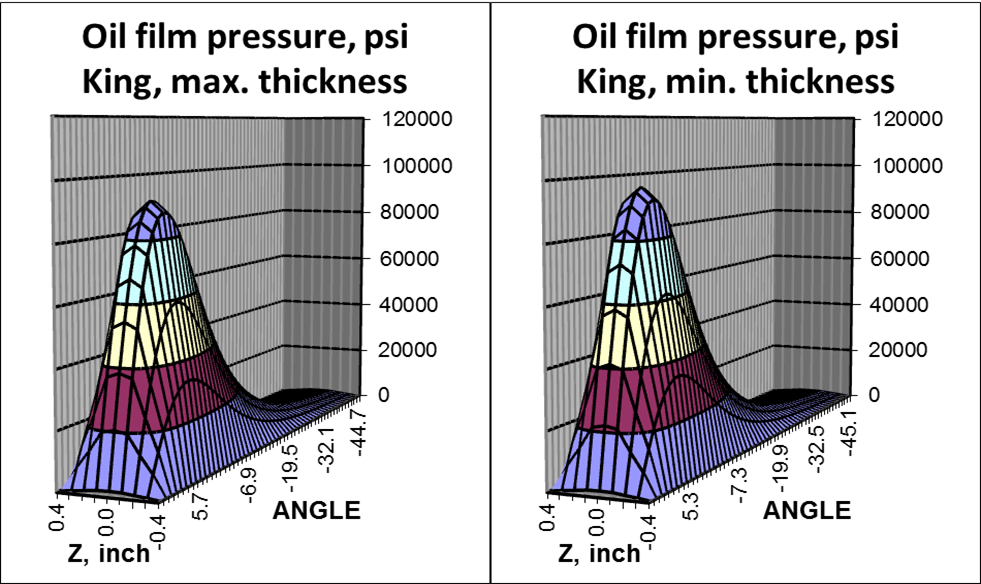
Fig.6 Distribution of oil pressure in King bearings
The difference in the peak values between two bearings having maximum and minimum wall thickness is only about 5%. A greater variance in the bearings’ thickness produces a greater difference between the values of peak oil pressure. It is illustrated in Fig.7, showing the diagrams of pressure distributions in the bearings of Competitor2.
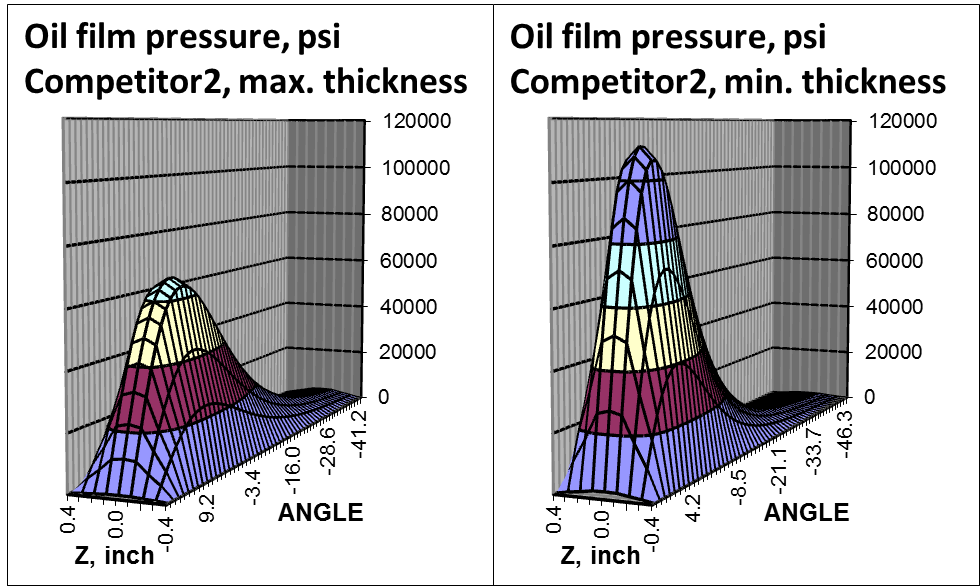
Fig.7 Distribution of oil pressure in the bearings of Competitor2
Peak oil pressure in the bearing with minimum wall thickness is 40% greater than that of the bearing with maximum wall thickness. Thus the thinner bearing (the bearing with the greater oil clearance) has a greater risk of failure due to fatigue. As seen in Fig.8, the difference between the peak values (both absolute and relative) in two bearings with different wall thickness decreases with a decrease of the rotation speed.
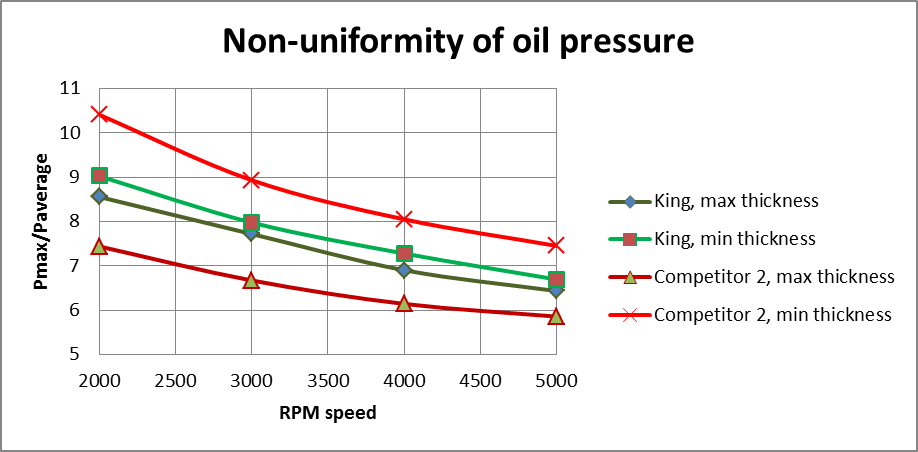
Fig.8 Effect of bearing thickness consistency on peak oil pressure
to top
Conclusions
- In order to provide a stable hydrodynamic lubrication regime of bearing operation, a bearing’s thickness should match the specified value within a tight tolerance.
- King Engine Bearings developed a production technology - Bull’s Eye Tolerance - ensuring very accurate wall thicknesses.
- Identical bearings produced by 6 different leading bearing manufacturers (including King) were measured by the leading multinational certification institution, SGS S.A..
- King exhibited the best results in variance and standard deviation
- The much more consistent thickness of King bearings results in a minor difference in oil flow rate and a more stable hydrodynamic lubrication.
- The low variance of King bearing thickness prevents the oil from overheating, and maintains hydrodynamic lubrication.
- A greater variance in bearing thickness produces a greater difference in the values of peak oil pressure.
- A thinner bearing (a bearing with greater oil clearance) has a greater risk of failure due to fatigue.
- Due to the consistency of King bearings, the peak values of oil pressure are close to each other and do not reach excessive levels.
References
[1] Dudley D. Fuller (1958), A Survey of Journal Bearing Literature, Amer. Soc. of Lubricating Engineers.
[2] Dmitri Kopeliovich (2011), Geometry and Dimensional Tolerances of Engine Bearings, Engine professional, AERA., p.70-76.
[3] Dmitri Kopeliovich (2015), Optimization of Clearance Design for High Performance Engine Bearings, SubsTech (Substances&Technologies), Available from http://www.substech.com/dokuwiki/doku.php?id=optimization_of_clearance_design_for_high_p erformance_engine_bearings
[4] J.E. Shigley (1986), Mechanical engineering design, McGraw-Hill Book Company.
[5] Dmitri Kopeliovich (2015), Engine bearing failure, SubsTech (Substances&Technologies), Available from http://www.substech.com/dokuwiki/doku.php?id=engine_bearing_failure
to top
Related internal links
to Metals
to Engine bearings



